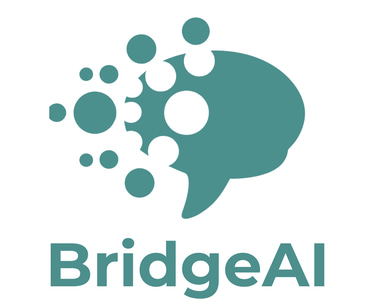From Vietnam to Brazil: Adapting ESL Materials for Different Cultural Contexts
One of the greatest challenges for ESL teachers and content creators is developing materials that respect cultural differences while maintaining pedagogical effectiveness. This comprehensive guide explores practical strategies for cultural adaptation across global teaching contexts.
Poppet Celdran
3/28/20256 min read


When Mei, an experienced ESL teacher from Vietnam, moved to teach in São Paulo, Brazil, she brought her carefully crafted lesson plans and materials. "I was confident in my teaching approach—until I used an activity that had been highly successful in Ho Chi Minh City," she recalls. "The Brazilian students seemed confused and disengaged, and I couldn't understand why."
This scenario plays out daily in ESL classrooms worldwide. Materials that resonate perfectly in one cultural context may fall flat—or worse, create misunderstandings—in another. Our survey of 350 ESL teachers working across multiple countries found that:
78% report regularly adapting materials for cultural appropriateness
62% have experienced "lesson failures" due to cultural misalignment
89% spend additional preparation time researching cultural norms
71% wish they had better resources for cultural adaptation
The global nature of English teaching creates a unique challenge: how to develop materials that are both pedagogically sound and culturally relevant across diverse contexts.
Why Cultural Adaptation Matters
Cultural adaptation goes beyond avoiding obvious faux pas. Research shows that culturally relevant materials significantly impact learning outcomes:
Student engagement: Materials reflecting familiar contexts increase attention by 44%
Comprehension: Cultural relevance improves reading comprehension by 37%
Participation: Culturally appropriate discussion topics boost classroom participation by 58%
Retention: Concepts taught through culturally familiar examples show 29% better recall
"When students see their lived experiences reflected in learning materials, they connect with the content on a deeper level," explains Dr. Fatima Neves, an applied linguistics professor at the Federal University of Rio de Janeiro. "Language isn't just words and grammar—it's cultural meaning-making."
Regional Insights: Key Considerations for Major ESL Markets
Southeast Asia (Vietnam, Thailand, Indonesia)
Classroom dynamics: Hierarchical teacher-student relationships with high respect for educators Content considerations: Avoid confrontational debate topics; preference for group harmony Teaching approach: Structured activities with clear instructions perform well Taboo topics: Sensitive political discussions, criticism of authority figures Effective adaptations: Incorporating local achievements, technology contexts, and family values
Example adaptation: Rather than using Western business negotiation role-plays that may emphasize confrontation, create activities around collaborative business problem-solving in local industries.
Latin America (Brazil, Mexico, Colombia)
Classroom dynamics: Relationship-oriented with emphasis on teacher-student connection Content considerations: Personal stories and emotional engagement resonate strongly Teaching approach: Interactive, community-building activities are highly effective Taboo topics: Extreme economic disparities, certain historical tensions Effective adaptations: Incorporating music, local celebrations, and community contexts
Example adaptation: Transform a standard "daily routine" lesson by framing it around preparing for a local festival or celebration, incorporating culturally specific activities and traditions.
Middle East (Saudi Arabia, UAE, Qatar)
Classroom dynamics: Often gender-segregated with distinct cultural expectations Content considerations: Family values and religious sensitivities are paramount Teaching approach: Respect for traditional learning methods alongside innovation Taboo topics: Dating, alcohol, revealing clothing in materials Effective adaptations: Business, technology, and educational advancement contexts work well
Example adaptation: Replace dating scenarios in conversation practice with family gatherings, professional networking, or educational exchanges.
East Asia (Japan, South Korea, China)
Classroom dynamics: Academic achievement highly valued with competitive elements Content considerations: Educational and professional advancement contexts resonate Teaching approach: Balance between structured learning and communicative needs Taboo topics: Varies by country, but may include certain historical references Effective adaptations: Technology, global business, and educational scenarios
Example adaptation: Convert general "giving opinions" activities to structured discussions about educational approaches or technology preferences with clear turn-taking protocols.
Europe (Various countries)
Classroom dynamics: Generally favors critical thinking and learner autonomy Content considerations: Current events and global perspectives often welcome Teaching approach: Discussion-based and problem-solving activities work well Taboo topics: Varies significantly by country; research specific sensitivities Effective adaptations: Contemporary issues, cultural exchange, and travel contexts
Example adaptation: Develop materials that incorporate multiple European perspectives on shared challenges, acknowledging the diversity within Europe itself.
Practical Adaptation Strategies for ESL Teachers
1. The Localization Framework
Implementing a systematic approach to adaptation helps ensure comprehensive cultural relevance:
Content Assessment: Evaluate existing materials for potential cultural misalignment
Check images, examples, scenarios, and assumptions
Identify Western-centric perspectives that may need adjustment
Flag potentially sensitive topics for substitution
Local Research: Gather cultural insights for your specific teaching context
Consult with local colleagues about appropriate themes
Research educational norms and expectations
Understand student interests and relevant contexts
Strategic Substitution: Replace problematic elements while maintaining learning objectives
Substitute culturally inappropriate examples with local equivalents
Adjust scenarios to reflect familiar situations
Modify images to represent local demographics
Pedagogical Preservation: Maintain instructional effectiveness through changes
Ensure adaptations still target the same language skills
Preserve difficulty level and cognitive demands
Maintain clear connection to learning objectives
Feedback Implementation: Continuously refine based on classroom response
Observe student engagement with adapted materials
Solicit direct feedback about cultural relevance
Document successful adaptations for future use
2. Technology-Assisted Cultural Adaptation
AI tools are increasingly helping teachers navigate cultural adaptation:
AI-powered localization: Platforms like Bridge.AI can automatically adjust materials for different cultural contexts while maintaining pedagogical integrity.
"I used to spend hours researching what topics would be appropriate for my Saudi Arabian business English students," shares James, an online ESL teacher. "Now I can specify the cultural context, and the AI generates materials that respect local norms while still teaching the target language effectively."
Key technology advantages include:
Efficiency: Automated adaptation of core materials to multiple contexts
Consistency: Maintaining pedagogical quality across adaptations
Research integration: Incorporating cultural insights from extensive datasets
Customization: Allowing teacher input for specific classroom needs
3. The Five-Point Context Check
Before using materials in a new cultural setting, run through this essential verification process:
Examples & Scenarios: Do situational contexts reflect local realities?
Images & Representations: Do visuals reflect the demographics of your students?
Topics & Themes: Are discussion topics appropriate for your specific context?
Communication Styles: Does the material respect local interaction patterns?
Value Assumptions: Does the content avoid imposing foreign cultural values?
"This checklist has saved me countless awkward classroom moments," notes Rania, who teaches across the Middle East. "What seems like a simple discussion topic in one country can be surprisingly sensitive in another."
Case Study: Cultural Adaptation in Action
The following real-world example demonstrates successful adaptation across multiple contexts:
Original material: A conversation lesson about weekend leisure activities featuring scenarios about beach trips, shopping malls, and house parties.
Vietnam adaptation: Modified to include family visits, studying at cafés, and public parks, reflecting common weekend activities. References to expensive shopping replaced with night markets.
Brazil adaptation: Beach scenarios retained but modified to emphasize family beach gatherings rather than individual pursuits. Added football (soccer) and community activities to reflect social priorities.
Saudi Arabia adaptation: Replaced mixed-gender social scenarios with family gatherings, mosque visits, and shopping with same-gender friends. Modified images to reflect local dress norms.
Japan adaptation: Added scenarios about technology hobbies, visiting cultural sites, and organized group activities. Modified to acknowledge work obligations that might continue on weekends.
The core language objectives remained consistent across all versions, but the cultural wrapping made the content accessible and engaging for each context.
Building a Globally Adaptive Teaching Approach
Beyond specific materials adaptation, teachers can develop a fundamentally adaptive mindset:
1. Embrace "Skeletal" Planning
Rather than creating fully fleshed-out materials tied to specific cultural contexts, develop "skeletal" lesson frameworks that can be easily adapted:
Create activity structures with interchangeable cultural content
Develop language practice formats that can incorporate locally relevant examples
Build assessment tools that work across cultural contexts
2. Cultivate Cultural Intelligence
Systematically develop your ability to work across cultural contexts:
Research cultural dimensions frameworks (Hofstede, Hall, etc.)
Study educational traditions in your target teaching regions
Learn from experienced teachers in specific cultural contexts
Document cultural insights from your own teaching experiences
3. Build a Global Resource Network
Develop connections with teachers and resources across multiple cultural contexts:
Join region-specific ESL teaching groups
Participate in international teaching exchanges
Collect and organize culturally diverse teaching materials
Collaborate with teachers from different cultural backgrounds
4. Implement Responsive Teaching
Rather than assuming cultural knowledge, build feedback mechanisms:
Create safe channels for students to provide cultural feedback
Observe engagement signals when using new materials
Ask local colleagues to review materials before use
Document successful and unsuccessful adaptations
The Future of Culturally Adaptive ESL Materials
As ESL teaching continues to globalize, several promising developments are emerging:
AI-powered personalization: Tools that automatically adapt to specific cultural contexts while maintaining pedagogical integrity
Collaborative platforms: International teacher networks co-creating and sharing culturally appropriate materials
Responsive content systems: Materials that evolve based on student engagement data across cultural contexts
Cultural consultation services: Specialized support for publishers and schools developing global materials
Teacher training evolution: Increased focus on cultural adaptation skills in TEFL certification programs
"The future of ESL materials isn't one-size-fits-all content," observes Dr. Minh Nguyen, educational technology researcher. "It's responsive, adaptive content that respects cultural differences while building English proficiency across diverse contexts."
Conclusion: The Adaptive Advantage
Developing culturally adaptive teaching materials isn't just about avoiding offense—it's about maximizing learning effectiveness. When students see their cultural realities reflected in ESL materials, engagement, comprehension, and retention all improve significantly.
For ESL teachers and content developers, cultural adaptation represents both a challenge and an opportunity. Those who master this skill can create materials that truly resonate with learners across global contexts, while those who ignore cultural differences risk disconnection and diminished outcomes.
As English continues its role as a global language, the most successful ESL professionals will be those who can teach the language while honoring the rich cultural diversity of learners worldwide.
Bridge.AI helps ESL teachers create culturally relevant materials through AI-powered adaptation technology. Our platform allows educators to generate lesson plans and activities customized for specific cultural contexts while maintaining pedagogical quality. Learn more at www.bridgeai.pro.
Keywords: culturally relevant ESL materials, global English teaching, ESL adaptation, cultural context in language teaching, adapting ESL lessons, teaching English in Vietnam, teaching English in Brazil, ESL cultural differences, international TEFL resources, localization for language teaching
Innovate
Empowering ESL teachers with AI-driven solutions.
Connect
info@bridgeai.pro
+84 909074793
© 2025. BridgeAI by Zen Tech Asia LLC. All rights reserved.
www.bridgeai.pro
